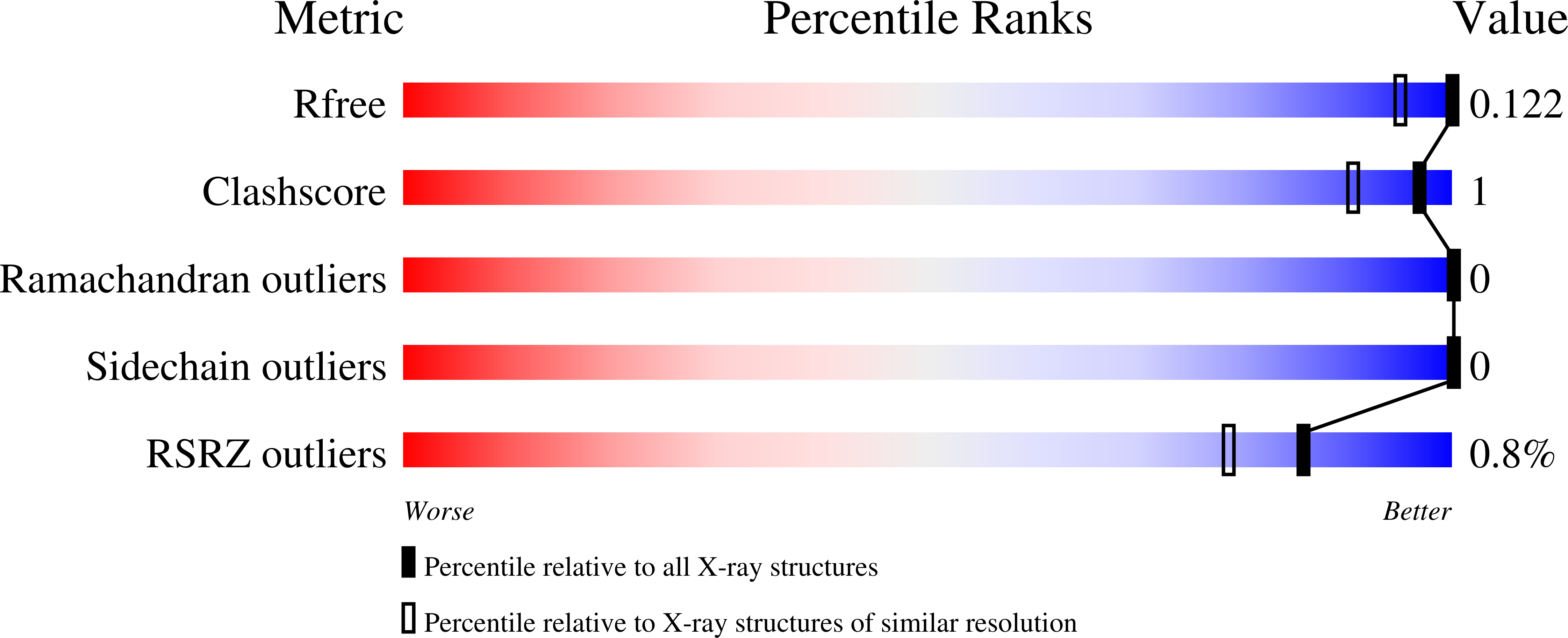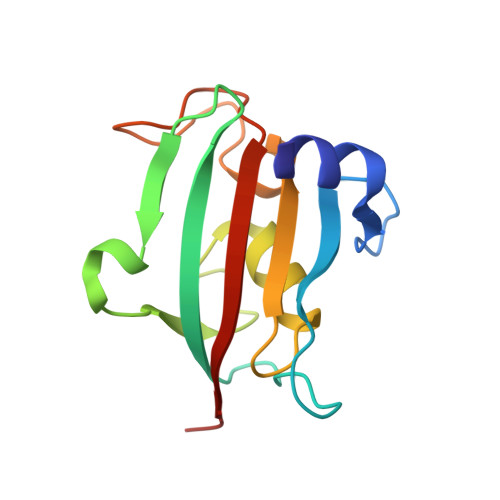Hybrid Screening Approach for Very Small Fragments: X-ray and Computational Screening on FKBP51.
Draxler, S.W., Bauer, M., Eickmeier, C., Nadal, S., Nar, H., Rangel Rojas, D., Seeliger, D., Zeeb, M., Fiegen, D.(2020) J Med Chem 63: 5856-5864
- PubMed: 32420743
- DOI: https://doi.org/10.1021/acs.jmedchem.0c00120
- Primary Citation of Related Structures:
6TX4, 6TX5, 6TX6, 6TX7, 6TX8, 6TX9, 6TXX - PubMed Abstract:
Fragment-based drug discovery (FBDD) permits efficient sampling of the vast chemical space for hit identification. Libraries are screened biophysically and fragment:protein co-structures are determined by X-ray crystallography. In parallel, computational methods can derive pharmacophore models or screen virtual libraries. We screened 15 very small fragments (VSFs) (HA ≤ 11) computationally, using site identification by ligand competitive saturation (SILCS), and experimentally, by X-ray crystallography, to map potential interaction sites on the FKBP51 FK1 domain. We identified three hot spots and obtained 6 X-ray co-structures, giving a hit rate of 40%. SILCS FragMaps overlapped with X-ray structures. The compounds had millimolar affinities as determined by 15 N HSQC NMR. VSFs identified the same interactions as known FK1 binder and provide new chemical starting points. We propose a hybrid screening strategy starting with SILCS, followed by a pharmacophore-derived X-ray screen and 15 N HSQC NMR based KD determination to rapidly identify hits and their binding poses.
Organizational Affiliation:
Medicinal Chemistry, Boehringer Ingelheim Pharma GmbH & Co. KG, Birkendorferstraße 65, 88397 Biberach, Germany.





















